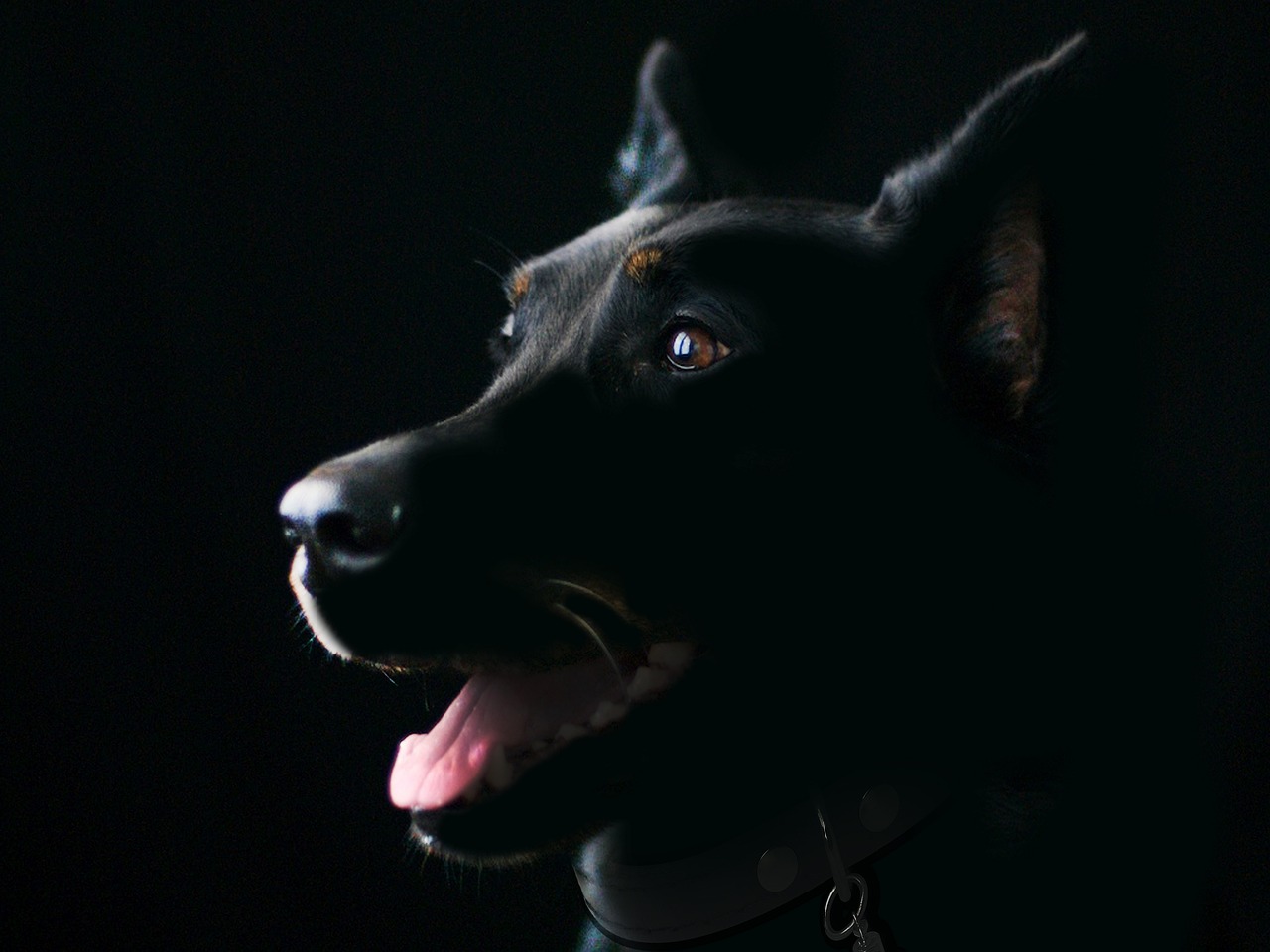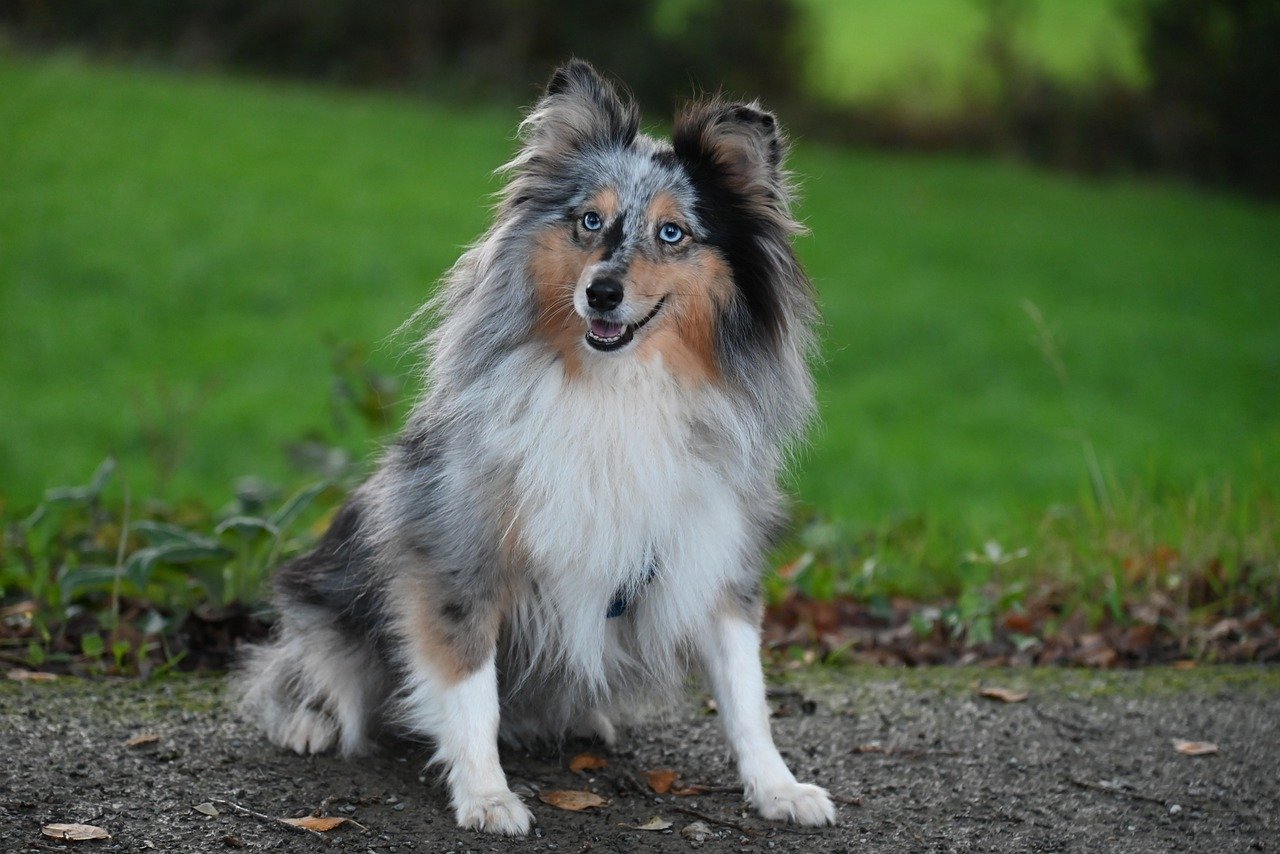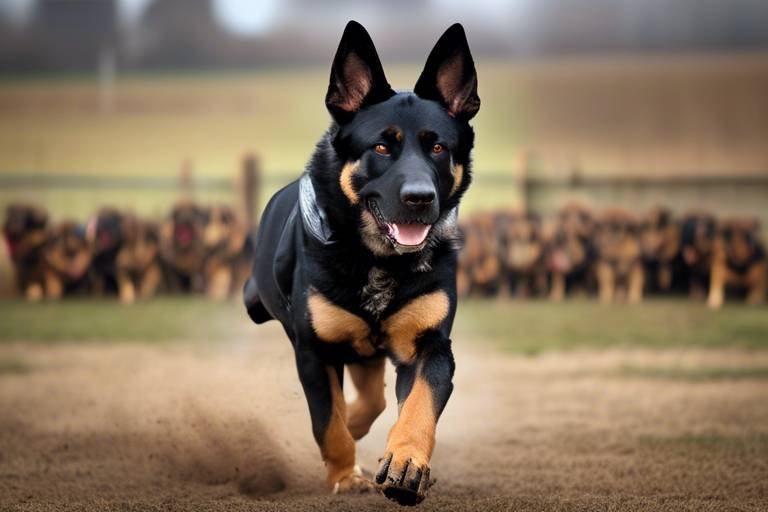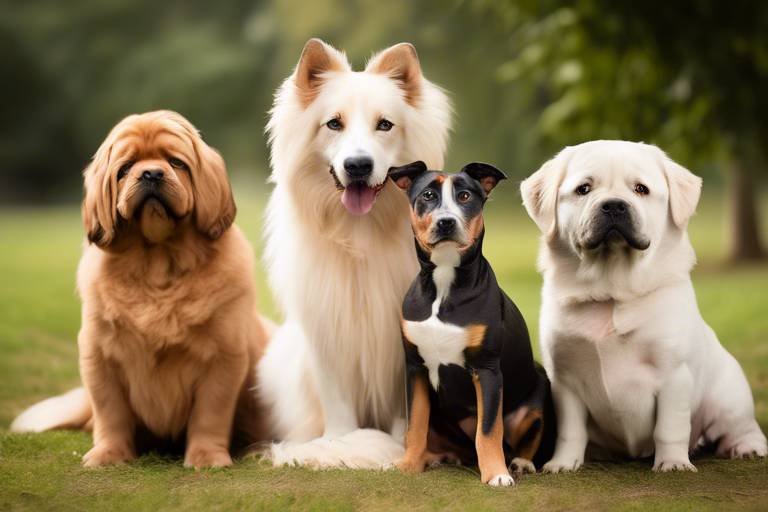The Differences Between Working Dogs and Companion Dogs
This article explores the distinct roles, traits, and training of working dogs versus companion dogs, highlighting their unique contributions to human life and society. Understanding these differences not only helps us appreciate the incredible abilities of these animals but also allows us to choose the right type of dog for our needs. Working dogs and companion dogs serve different purposes, and each has its own set of characteristics that make it special. Whether you're considering bringing a dog into your life or simply want to learn more about these amazing animals, this article will provide you with valuable insights.
Working dogs are bred and trained to perform specific tasks that assist humans. Their roles can vary widely, including search and rescue, herding, police work, and service roles. These dogs are often selected for their intelligence, strength, and trainability, which are crucial for their efficiency and reliability in various tasks. Imagine a dog that can navigate through rubble to find a lost person or one that can guide a visually impaired individual safely through busy streets—these are just a few examples of the extraordinary capabilities of working dogs.
On the other hand, companion dogs are primarily bred for companionship and emotional support. They are chosen for their friendly demeanor, sociability, and ability to bond closely with humans. These dogs enhance their owners' quality of life by providing emotional warmth and companionship. Think of them as furry therapists; their presence can elevate your mood and reduce feelings of loneliness. While they may not perform specific tasks like working dogs, their role in our lives is equally important, especially for mental health and emotional well-being.
Working dogs serve various essential functions that significantly impact society. From police and military roles to therapy and assistance for individuals with disabilities, each role requires specialized training and skills that cater to specific needs. For instance, a police dog is trained to detect drugs or explosives, while a therapy dog is trained to provide comfort to those in hospitals or nursing homes. These roles not only highlight the versatility of working dogs but also illustrate their importance in enhancing safety and well-being in our communities.
Service dogs are a prime example of how working dogs can change lives. These highly trained animals assist individuals with disabilities by providing physical support and emotional comfort. They help with tasks like opening doors, retrieving items, or alerting their handlers to medical emergencies. The bond between a service dog and its handler is profound, often leading to increased independence and improved quality of life. Imagine the difference it makes for someone with mobility challenges to have a dog that can help them navigate daily tasks!
Search and rescue dogs are trained to locate missing persons in various environments, from urban settings to wilderness areas. Their keen sense of smell and agility make them invaluable in emergency situations and disaster recovery efforts. These dogs are often deployed in scenarios like natural disasters, where their ability to sniff out survivors can mean the difference between life and death. It's truly remarkable how these dogs can navigate through challenging terrains, driven by their instincts and training.
In contrast, companion dogs primarily provide emotional support and companionship. Their presence can alleviate loneliness and stress, making them essential for mental health and well-being in many households. They are often the first to greet you at the door, wagging their tails and eager to share in your daily experiences. This bond can be incredibly comforting, especially during tough times. Companion dogs remind us that sometimes, the best therapy comes with four legs and a wagging tail.
The training methods for working dogs focus on task-specific skills, while companion dogs often undergo basic obedience training. This difference reflects their distinct roles in human lives and environments. Working dogs need to be highly disciplined and capable of performing under pressure, while companion dogs benefit from training that enhances their socialization and friendly behavior. Understanding these training differences is crucial for anyone considering bringing a dog into their home.
Working dogs undergo rigorous training programs tailored to their specific job requirements. These programs emphasize discipline, focus, and the ability to perform under pressure. Trainers often use a variety of techniques, including positive reinforcement, to ensure that these dogs can execute their tasks efficiently. Imagine the dedication and hard work that goes into training a dog to locate a missing person or assist someone with a disability—it’s a testament to the incredible bond between humans and dogs.
On the other hand, companion dogs typically receive training that enhances socialization and basic commands, fostering a friendly and well-adjusted pet. Positive reinforcement is a common method used to encourage good behavior, making training a fun and rewarding experience for both the dog and the owner. This type of training helps build a strong bond between the dog and its family, ensuring that the dog is not only a beloved pet but also a well-mannered member of the household.
- What breeds are considered working dogs? Breeds like German Shepherds, Labrador Retrievers, and Belgian Malinois are often used as working dogs due to their intelligence and trainability.
- Can companion dogs be trained for tasks? Yes, some companion dogs can be trained for basic assistance tasks, but they are primarily focused on providing emotional support.
- How long does it take to train a working dog? Training can vary widely, but it typically takes several months to a few years, depending on the complexity of the tasks.
- Are there specific breeds that make better companion dogs? Breeds like Golden Retrievers, Beagles, and Cavalier King Charles Spaniels are often favored for their friendly and affectionate nature.

Defining Working Dogs
When we think of working dogs, images of loyal canines performing critical tasks often come to mind. These dogs are not just pets; they are specially bred and trained to assist humans in various essential roles. From herding sheep on a vast ranch to aiding in search and rescue missions, working dogs possess a unique set of skills that set them apart from their companion counterparts. Their training is not merely a hobby but a rigorous process designed to hone their instincts and abilities for specific functions.
Working dogs are typically characterized by their intelligence, energy, and drive. These traits make them suitable for demanding tasks that require both physical and mental stamina. Breeds such as German Shepherds, Border Collies, and Labrador Retrievers are prime examples of working dogs, each excelling in different areas based on their lineage and training. For instance, while a Border Collie might shine in herding livestock, a Labrador Retriever may excel in search and rescue missions due to its keen sense of smell and friendly demeanor.
One of the defining features of working dogs is their task-oriented nature. Unlike companion dogs, whose primary role is to provide emotional support, working dogs are driven by a purpose. This purpose can be categorized into various roles, including but not limited to:
- Search and Rescue: Trained to locate missing persons in emergencies.
- Service Dogs: Assist individuals with disabilities, offering both physical support and emotional comfort.
- Herding Dogs: Manage livestock on farms, ensuring they stay within designated areas.
- Police and Military Dogs: Aid law enforcement in various operations, including drug detection and crowd control.
Each of these roles requires a unique set of skills and training techniques, emphasizing the importance of discipline and focus. Working dogs undergo extensive training that can last several months to years, depending on their assigned tasks. This training not only enhances their physical abilities but also strengthens their bond with their handlers, creating a partnership built on trust and mutual respect.
In summary, working dogs are remarkable animals that play crucial roles in our society. Their distinct traits and specialized training enable them to perform tasks that not only assist humans but also save lives. As we explore the differences between working dogs and companion dogs, it becomes clear that both types of dogs enrich our lives in unique ways, each fulfilling a specific niche that highlights their extraordinary capabilities.

Defining Companion Dogs
Companion dogs, as the name suggests, are primarily bred and nurtured to be companions to humans. Unlike working dogs, whose lives revolve around performing specific tasks, companion dogs thrive on emotional connections and social interactions. These furry friends are often seen as integral members of the family, providing not just love and affection, but also a sense of purpose and belonging for their owners. Imagine coming home after a long day; the wagging tail and excited barks of a companion dog can instantly lift your mood and wash away the stress of the day.
These dogs are typically chosen for their friendly demeanor and ability to bond closely with humans. Breeds like Golden Retrievers, Labrador Retrievers, and Cavalier King Charles Spaniels are popular choices, thanks to their gentle nature and sociable traits. Companion dogs are not just pets; they are often seen as emotional support animals that help alleviate feelings of loneliness and anxiety. Their presence can be a soothing balm, making them essential for mental health and well-being in many households.
One of the fascinating aspects of companion dogs is their ability to adapt to various lifestyles. Whether you live in a bustling city apartment or a quiet countryside home, there’s a companion dog breed that can fit seamlessly into your life. They come in all shapes and sizes, from the tiny and energetic Chihuahua to the larger, more laid-back Bernese Mountain Dog. This versatility allows people from all walks of life to experience the joy and unconditional love that a companion dog brings.
Moreover, the bond between humans and companion dogs goes beyond just companionship. Studies have shown that having a dog can lead to improved mental health, reduced stress levels, and even lower blood pressure. The simple act of petting a dog can release oxytocin, the hormone associated with bonding and emotional connection. Isn’t it amazing how these furry friends can have such a profound impact on our lives?
In conclusion, companion dogs are more than just pets; they are loving partners that enhance our quality of life. Their ability to provide emotional support, companionship, and even health benefits makes them invaluable to many households. As we continue to explore the world of dogs, it’s essential to recognize the unique role that companion dogs play in enriching our lives.
Roles of Working Dogs
Working dogs are not just canines; they are heroes in fur coats, performing critical functions that significantly enhance human safety and well-being. From the moment they are born, these dogs are bred with specific traits that make them suitable for various demanding roles. Each working dog has a purpose, whether it's in the field, on the front lines, or in the homes of those who need assistance.
One of the most recognized roles of working dogs is their involvement in law enforcement and military operations. These dogs are trained to detect drugs, explosives, and even track down suspects. Their acute sense of smell and unwavering focus make them invaluable assets to police forces. Imagine a dog sniffing out hidden dangers before they can harm anyone; that's the reality of their work.
In addition to law enforcement, working dogs play a crucial role in search and rescue operations. When disaster strikes—be it an earthquake, avalanche, or a missing person case—these dogs come into action. With their extraordinary sense of smell and agility, they can navigate through rubble and challenging terrains to locate individuals in distress. Their ability to work in high-pressure situations is nothing short of astounding, often saving lives when time is of the essence.
Furthermore, there are therapy dogs that provide emotional support to individuals in hospitals, nursing homes, and schools. These dogs are trained to offer comfort and companionship, helping to alleviate anxiety and depression. Their presence can brighten the day of someone who is feeling down, making them a vital part of mental health support systems.
Here’s a quick overview of some of the primary roles that working dogs fulfill:
| Role | Description |
|---|---|
| Search and Rescue | Locate missing persons in various environments. |
| Service Dogs | Assist individuals with disabilities. |
| Therapy Dogs | Provide emotional support in hospitals and schools. |
| Detection Dogs | Identify drugs, explosives, and other illegal substances. |
In essence, the roles of working dogs are diverse and impactful. They are not just pets; they are trained professionals that enhance our lives in ways we often take for granted. The dedication and skill of these dogs, combined with the training they undergo, create a partnership that is both powerful and essential to our society.
Service Dogs
Service dogs are remarkable canines trained to assist individuals with disabilities, providing not just physical support but also emotional comfort. Imagine having a loyal companion by your side, helping you navigate the challenges of daily life. These dogs are more than just pets; they are lifelines for many, enhancing independence and improving the quality of life for their handlers. Their training is extensive and specialized, focusing on the specific needs of the person they serve.
One of the most compelling aspects of service dogs is their ability to perform tasks that many people take for granted. For example, they can help individuals with mobility impairments by retrieving items, opening doors, or even pulling wheelchairs. Additionally, they can alert their handlers to medical emergencies, such as seizures or low blood sugar levels, acting as an early warning system. This level of assistance can be life-changing, allowing individuals to lead more active and fulfilling lives.
Service dogs come in various breeds, each chosen for their temperament, intelligence, and trainability. Common breeds include Golden Retrievers, Labrador Retrievers, and German Shepherds. These breeds not only have the physical attributes necessary for assistance but also possess the gentle nature needed to provide emotional support. It's important to note that the bond between a service dog and its handler is incredibly strong, often described as a partnership built on trust and mutual respect.
Moreover, the training process for service dogs is rigorous and can take up to two years. Trainers use a combination of techniques, including positive reinforcement, to instill the skills necessary for the dog to perform its duties. The training typically includes:
- Basic obedience commands
- Task-specific training tailored to the handler's needs
- Socialization to ensure the dog behaves well in various environments
Once trained, service dogs are legally recognized and granted access to public spaces, which is crucial for their handlers. This access allows individuals with disabilities to participate fully in society, breaking down barriers that might otherwise limit their opportunities. The presence of a service dog can also foster understanding and acceptance in the community, as people witness the vital roles these dogs play in improving the lives of those with disabilities.
In conclusion, service dogs are not just animals; they are trained professionals that make a profound difference in the lives of many individuals. Their ability to assist with daily tasks and provide emotional support highlights the incredible bond between humans and dogs. As we continue to recognize and appreciate the contributions of these remarkable animals, it becomes clear that their role in society is invaluable.
As we explore the world of service dogs, you might have some questions. Here are a few frequently asked questions that can help clarify their role and importance:
- What is the difference between a service dog and a therapy dog? Service dogs are trained to perform specific tasks for individuals with disabilities, while therapy dogs provide comfort and support to groups of people.
- Can any dog become a service dog? No, not every dog is suited for service work. They must meet specific behavioral and temperament criteria.
- Are service dogs allowed in all public places? Yes, service dogs are granted access to public spaces under the Americans with Disabilities Act (ADA).
Search and Rescue Dogs
Search and rescue dogs are the unsung heroes of emergency situations. With their extraordinary sense of smell and remarkable agility, these dogs are trained to locate missing persons in a variety of challenging environments. Whether it's a dense forest, a collapsed building, or a vast area after a natural disaster, their skills can mean the difference between life and death. Imagine a scene where a child goes missing in the woods; the clock is ticking, and every second counts. Enter the search and rescue dog, ready to spring into action, guided by their handler and driven by an innate desire to help.
These dogs undergo extensive training that prepares them for the unpredictable nature of their work. The training often includes:
- Basic obedience skills to ensure they follow commands under pressure.
- Specialized scent detection techniques to identify human scents amidst various distractions.
- Agility training to navigate through rough terrains and obstacles.
One of the most fascinating aspects of search and rescue dogs is their ability to work in teams, often alongside human first responders. This partnership is built on trust and communication, where the dog's instincts complement the human's strategic thinking. For instance, during a search operation, a dog may lead its handler to a specific area based on a scent trail, showcasing their incredible abilities and bond.
Moreover, the emotional connection between search and rescue dogs and their handlers is profound. Handlers often describe their dogs as not just colleagues but as family members. This bond enhances the effectiveness of their work, as the dog is not only motivated by training but also by a strong desire to please their handler. It's a partnership that exemplifies loyalty and dedication, showcasing the unique relationship between humans and dogs.
In summary, search and rescue dogs are more than just pets; they are vital partners in saving lives. Their training, instincts, and emotional bonds with their handlers make them indispensable in times of crisis. As we continue to rely on these remarkable animals, it's essential to recognize and appreciate the hard work and commitment that goes into training them for such critical roles.
- What breeds are commonly used as search and rescue dogs?
While many breeds can be trained for search and rescue, some of the most popular include German Shepherds, Golden Retrievers, and Labrador Retrievers due to their strong sense of smell and trainability.
- How long does it take to train a search and rescue dog?
The training can take anywhere from 6 months to several years, depending on the dog's age, breed, and the complexity of the tasks they are being trained for.
- Can any dog become a search and rescue dog?
Not all dogs are suited for this type of work. Ideal candidates are typically energetic, eager to please, and possess a strong prey drive, which helps them stay motivated during searches.
Roles of Companion Dogs
Companion dogs play a pivotal role in the lives of many people, offering not just companionship but also a sense of purpose and emotional support. These furry friends are often seen as integral members of the family, providing joy and comfort in ways that go beyond mere presence. Imagine coming home after a long day, feeling the weight of the world on your shoulders, and being greeted by a wagging tail and a joyful bark. That’s the magic of companion dogs—they have an uncanny ability to lift our spirits and make us feel loved.
One of the primary roles of companion dogs is to combat loneliness. For individuals living alone, a dog can be a source of unconditional love and companionship. They thrive on interaction, and their playful nature can turn a dull day into a vibrant one. Additionally, studies have shown that having a dog can significantly reduce feelings of isolation, especially among the elderly or those with limited social interactions. In many ways, these dogs serve as a bridge to the outside world, encouraging their owners to engage more with their surroundings.
Moreover, companion dogs contribute to mental health in profound ways. Their presence can alleviate symptoms of anxiety and depression. The simple act of petting a dog can release oxytocin, a hormone that promotes bonding and reduces stress. This is why therapy dogs are often brought into hospitals and schools—they provide comfort and emotional support in environments that can be stressful. The warmth of a dog lying beside you can be more soothing than any medication, offering a sense of calm that is hard to replicate.
In addition to emotional support, companion dogs encourage physical activity and socialization. Owners often find themselves taking regular walks, playing fetch, or even attending dog parks, which can lead to new friendships and a more active lifestyle. The routine of caring for a dog also instills a sense of responsibility and purpose, which can be especially beneficial for individuals struggling with mental health challenges.
To encapsulate the various roles that companion dogs play, let's take a look at the key benefits they offer:
- Emotional Support: They provide a comforting presence that can ease anxiety and loneliness.
- Encouragement for Physical Activity: Regular walks and playtime contribute to a healthier lifestyle.
- Social Interaction: They can help foster connections with other dog owners and the community.
- Routine and Responsibility: Caring for a dog instills a sense of purpose and routine in daily life.
In conclusion, companion dogs are much more than pets; they are lifelong friends who enrich our lives in countless ways. Their ability to provide love, support, and joy is unmatched, making them a cherished addition to any household. Whether they are curled up on the couch or eagerly waiting by the door, companion dogs remind us of the simple joys of life and the importance of connection.

Training Differences
When it comes to the between working dogs and companion dogs, the contrast is as clear as day. Working dogs are like finely tuned machines, crafted for specific tasks that demand a high level of skill and focus. Their training programs are intensive and tailored to meet the unique requirements of their roles. Imagine a police dog, for instance, undergoing rigorous drills that simulate real-life scenarios they might face on the job. These dogs are trained to respond to commands with precision, often in high-pressure situations where every second counts.
On the flip side, companion dogs enjoy a more relaxed training regimen. Their training often revolves around basic obedience and socialization skills. This is not to say that their training is any less important; rather, it serves a different purpose. Companion dogs are trained to be friendly, approachable, and well-behaved, making them delightful additions to any household. Picture a golden retriever learning to sit and stay while being showered with affection and treats; it’s all about building a bond of trust and love.
To illustrate the differences in training approaches, let’s break it down into a simple comparison:
| Aspect | Working Dogs | Companion Dogs |
|---|---|---|
| Training Focus | Task-specific skills | Basic obedience and socialization |
| Training Intensity | High, often rigorous | Moderate, more relaxed |
| Environment | Controlled, often simulated scenarios | Home and social settings |
| Outcome | Efficiency and reliability in tasks | Well-adjusted, friendly behavior |
In the realm of working dogs, training techniques often include methods such as operant conditioning, where dogs learn to associate certain behaviors with rewards or consequences. This approach is crucial for ensuring that working dogs can perform their duties effectively, whether it’s detecting drugs, assisting in search and rescue operations, or providing support to individuals with disabilities.
Conversely, companion dogs benefit from a training philosophy that emphasizes positive reinforcement. This means that instead of focusing solely on commands, trainers encourage desirable behaviors by rewarding them. For example, when a dog sits on command, it might receive a treat or praise. This method fosters a loving and trusting relationship between the dog and its owner, making the training process enjoyable for both parties.
Ultimately, the training differences between working dogs and companion dogs reflect their unique roles in our lives. While working dogs are trained to perform specific tasks with precision and focus, companion dogs are nurtured to be loving companions who bring joy and comfort to their owners. Each type of dog plays a vital role in enhancing human life, and understanding their training can help us appreciate the incredible bond we share with our furry friends.
- What is the main difference between working dogs and companion dogs? Working dogs are trained for specific tasks, while companion dogs are primarily bred for emotional support and companionship.
- How long does it take to train a working dog? Training can vary significantly, often taking several months to years depending on the complexity of the tasks they are being trained for.
- Can companion dogs be trained for specific tasks? While they can learn basic commands and social skills, they typically do not undergo the same level of specialized training as working dogs.
Training Techniques for Working Dogs
Training techniques for working dogs are not just about teaching commands; they are a blend of science, art, and an understanding of canine behavior. These dogs are often trained to perform specific tasks that require a high level of skill and focus. The training process is intensive and usually involves several stages, each designed to build on the last. For instance, a police dog may start with basic obedience before moving on to more complex tasks such as tracking or apprehending suspects.
One of the most critical aspects of training working dogs is the use of positive reinforcement. This method encourages desired behaviors by rewarding dogs with treats, praise, or playtime. The idea is to create a positive association with the behavior, making it more likely that the dog will repeat it. For example, when a search and rescue dog successfully locates a person, they might receive a favorite toy or a hearty pat on the back. This not only reinforces the behavior but also strengthens the bond between the trainer and the dog.
Additionally, working dogs often undergo training in realistic scenarios to prepare them for the pressures of their roles. For instance, a service dog might practice navigating crowded public spaces, while a herding dog learns to manage livestock in a controlled environment. This type of training is essential because it helps the dog understand how to react in real-world situations, ensuring they can perform their duties effectively when it matters most.
Another important technique involves desensitization. This is particularly crucial for dogs that will be exposed to stressful environments, such as those working in law enforcement or search and rescue. By gradually introducing dogs to various stimuli, such as loud noises or chaotic scenes, trainers can help them remain calm and focused during actual operations. This technique is akin to training an athlete to perform under pressure; the more they practice in challenging conditions, the better they will perform when it counts.
Finally, teamwork is a vital component of training working dogs. Many of these dogs work closely with their human partners, so it’s essential that both the dog and handler develop a strong rapport. Training sessions often include exercises that encourage communication and cooperation between the two, ensuring that they can work seamlessly together in high-stakes situations. The bond formed through this training is not just beneficial for the tasks at hand; it also fosters trust and loyalty, which are crucial for the success of their missions.
In summary, the training techniques for working dogs are comprehensive and tailored to the specific roles they will fulfill. From positive reinforcement and realistic scenario training to desensitization and teamwork exercises, each method is designed to ensure that these remarkable animals can perform their duties effectively and safely. The dedication and skill involved in training working dogs not only highlight their importance in various fields but also reflect the profound connection between humans and their canine companions.
Training Techniques for Companion Dogs
When it comes to training companion dogs, the approach is often more relaxed compared to the rigorous training of working dogs. Companion dogs are primarily valued for their ability to bond with humans and provide emotional support, so their training focuses on enhancing these qualities. The goal is to create a well-rounded pet that is both friendly and obedient, making them a joy to have around the house.
One of the most effective training techniques for companion dogs is the use of positive reinforcement. This method involves rewarding desired behaviors with treats, praise, or playtime, which encourages the dog to repeat those behaviors. For example, when a dog sits on command, offering a tasty treat not only reinforces that behavior but also strengthens the bond between the dog and owner. This technique is particularly effective because it creates a positive association with training, making the dog more eager to learn.
Socialization is another crucial aspect of training for companion dogs. Exposing them to various environments, people, and other animals helps them develop confidence and reduces the likelihood of behavioral issues later on. A well-socialized dog is generally more adaptable and less fearful, which is essential for their role as a companion. Owners can facilitate socialization by taking their dogs to parks, doggy daycare, or even arranging playdates with other friendly pets.
Additionally, basic obedience commands such as sit, stay, and come form the foundation of a companion dog's training. These commands not only ensure safety but also enhance the overall quality of life for both the dog and the owner. Training sessions should be kept short and engaging, as dogs have relatively short attention spans. A typical session might last about 5 to 10 minutes, followed by a fun activity, such as a game of fetch, to keep the dog motivated and eager to learn.
It’s also important to remember that training is an ongoing process. Even after mastering basic commands, companion dogs benefit from continuous learning and mental stimulation. Engaging them in activities like puzzle toys, agility courses, or even simple tricks can keep their minds sharp and their spirits high. The more involved the owner is in the training process, the stronger the bond will be, leading to a happier and healthier dog.
In summary, the training techniques for companion dogs emphasize positive reinforcement, socialization, and basic obedience. By focusing on these areas, owners can cultivate a loving and well-adjusted pet that enhances their overall quality of life. Remember, the journey of training is not just about teaching commands—it's about building a lasting relationship with your furry friend.
- What is the best age to start training my companion dog?
It's best to start training as early as possible, ideally when your dog is a puppy. However, older dogs can also learn new tricks and behaviors. - How long should training sessions last?
Training sessions should be short, around 5 to 10 minutes, to keep your dog engaged and focused. - Can I train my companion dog at home?
Absolutely! Many effective training techniques can be done at home, but consider enrolling in a class for additional guidance and socialization. - What should I do if my dog doesn't respond to commands?
Be patient and consistent. It may take time for your dog to learn. Using positive reinforcement can help motivate them.
Frequently Asked Questions
- What are the main differences between working dogs and companion dogs?
Working dogs are specifically bred and trained to perform tasks that assist humans, such as search and rescue, herding, or serving individuals with disabilities. In contrast, companion dogs are primarily bred for emotional support and companionship, offering comfort and joy to their owners.
- How are working dogs trained for their specific roles?
Working dogs undergo rigorous training programs that focus on task-specific skills. These programs emphasize discipline, focus, and the ability to perform under pressure, ensuring that the dogs can effectively assist in their designated roles.
- What types of roles do working dogs fulfill?
Working dogs serve in various essential roles, including police and military service, search and rescue operations, therapy work, and assistance for individuals with disabilities. Each role requires specialized training tailored to meet specific needs.
- What is the role of service dogs?
Service dogs are trained to assist individuals with disabilities, providing both physical support and emotional comfort. They play a crucial role in enhancing the independence and quality of life for their handlers, often performing tasks that help mitigate their owner's disability.
- What training do companion dogs typically receive?
Companion dogs usually receive basic obedience training that focuses on socialization and teaching essential commands. The training often employs positive reinforcement techniques to encourage good behavior, making them friendly and well-adjusted pets.
- Can companion dogs also serve as working dogs?
While companion dogs are primarily bred for emotional support, some can undergo additional training to perform specific tasks, potentially allowing them to assist in certain working roles. However, their temperament and abilities must align with the demands of the job.
- How do I choose between a working dog and a companion dog?
Your choice should depend on your lifestyle and needs. If you require assistance with specific tasks or have a job that could benefit from a working dog, then that may be the right choice. On the other hand, if you’re looking for a loyal friend to provide emotional support, a companion dog would be more suitable.



















